NOTE
| NOTE |
This is information that can improve efficiency of maintenance and assure sound work.
| FASTENER NOTICE |
Fasteners are used to prevent parts from damage and dislocation due to looseness. Fasteners must be tightened to the specified torque.
Do not apply paint, lubricant, rust retardant, or other substances to the surface around bolts, fasteners, etc. Doing so will make it difficult to obtain the correct torque and result in looseness and other problems.
| STATIC ELECTRICITY DAMAGE |
Do not touch the control unit, connectors, logic boards, and other such parts when there is a risk of static electricity. Always use a static electricity prevention cord or touch grounded metal before conducting work.
| BATTERY |
When removing the battery cables, always be sure to turn the ignition off to prevent electrical damage to the control unit from rush current.
| SERVICE PARTS |
Use authentic service parts for maximum performance and maintenance, when conducting repairs. Subaru/FHI will not be responsible for poor performance resulting from the use of parts not specified by a genuine dealer.
| PROTECTING VEHICLE UNDER MAINTENANCE |
Make sure to attach the fender cover, seat covers, etc. before work.
| ENSURING SAFETY DURING WORK |
When working in a group of two or more, perform the work with calling each other to ensure mutual safety.
| LIFTS AND JACKS |
When using a lift or jack to raise a vehicle, always follow instructions concerning jack-up points and weight limits to prevent the vehicle from falling, which could result in injury. Be especially careful to make sure the vehicle is balanced before raising it.
Be sure to set the wheel stoppers when jacking-up only the front or rear of the vehicle.
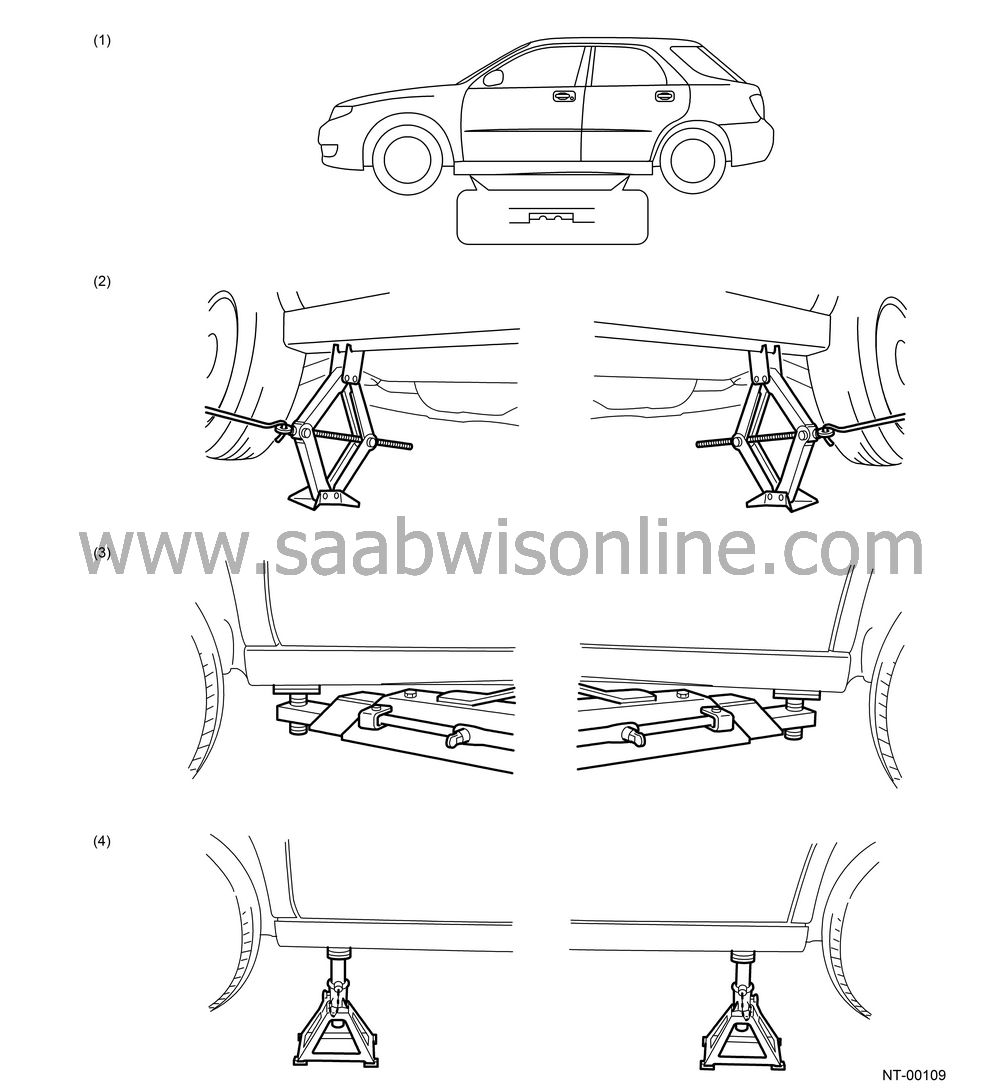
|
(1)
|
Support
locations
|
(3)
|
Lift
|
(4)
|
Rigid rack
|
|
(2)
|
Pantograph
jack
|
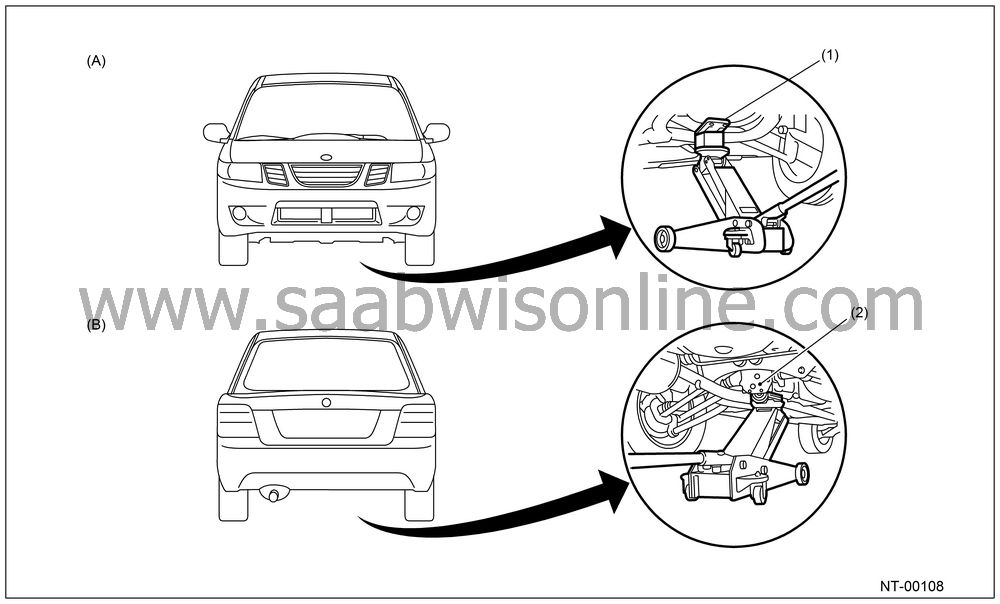
|
(A)
|
Front
|
(B)
|
Rear
|
||
|
(1)
|
Front crossmember
|
(2)
|
Rear differential
|
| TIE-DOWNS |
Tie downs are used when transporting vehicles and when using the chassis dynamo. Attach tie downs only to the specified points on the vehicle.
Tie-down point

|
(1)
|
Hook for
tie-down
|
(2)
|
Hook for
towing and tie-down
|
Chain direction at tie-down condition
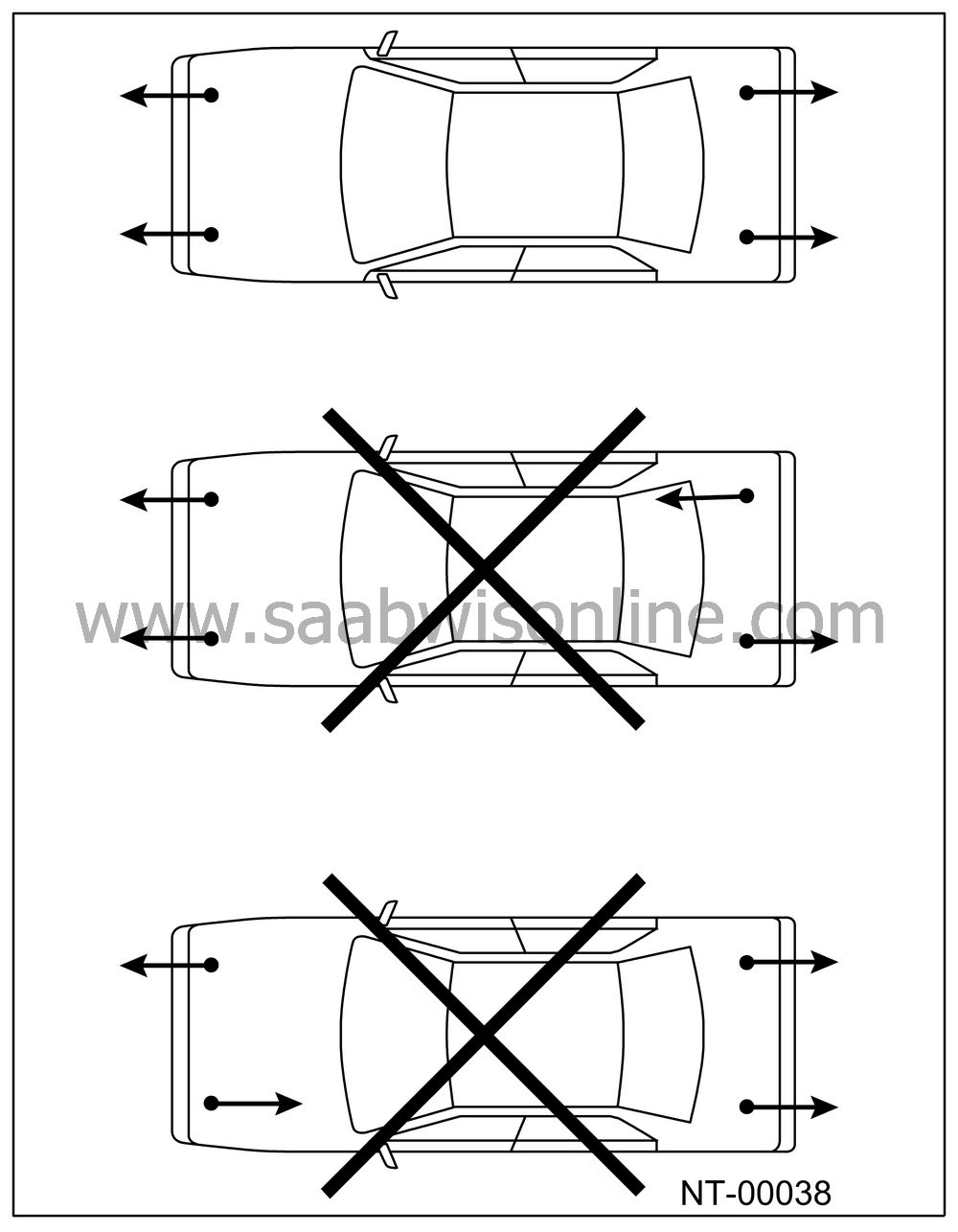
Chain pulling range at tie-down condition
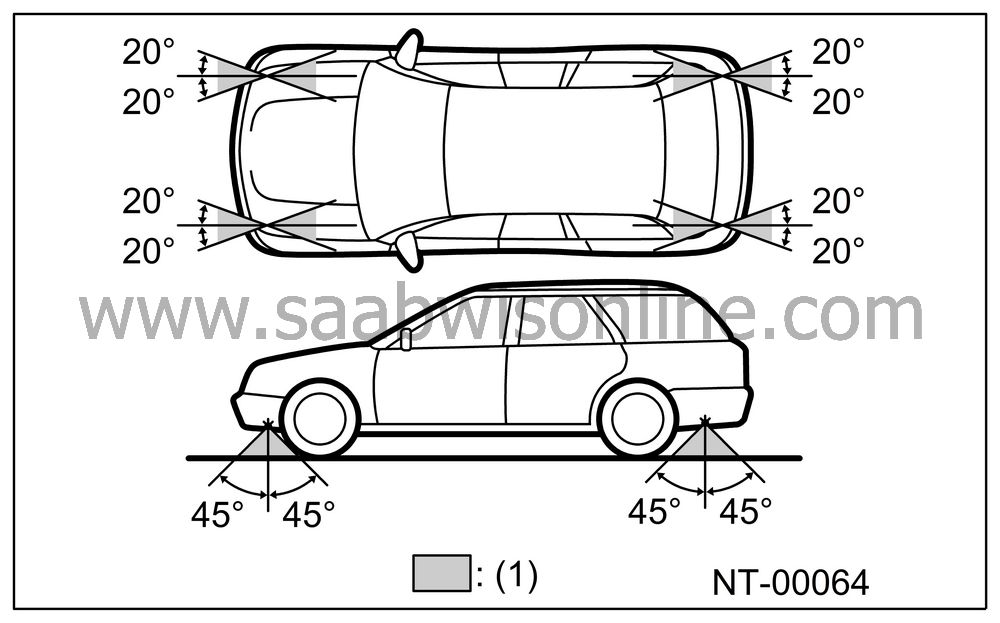
|
(1)
|
Chain pulling
range at tie-down condition
|
Vehicle sinking volume at tie-down condition
Measure the distance L between tire highest point to arch highest point before tie-down and after tie-down. Difference of measurement value (drop height) shall be within 50 mm (1.97 in). Make sure to fix the vehicle securely.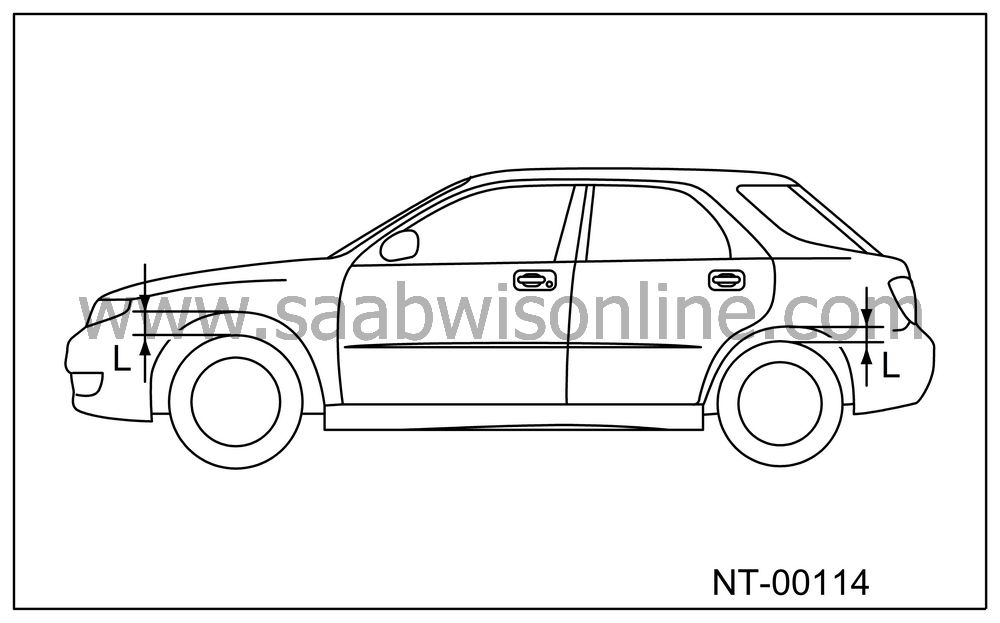
| TOWING |
Avoid towing vehicles except when the vehicle cannot be driven. For models with AWD, AT, or VTD, use a loader instead of towing. When towing other vehicles, to prevent excessive weight from damaging the hook or vehicle:
| • |
Do not install the hook except when towing.
|
|
| • |
Do not tow other vehicles with a front
hook for tie down.
|
|
| • |
Make sure the vehicle towing is heavier
that the vehicle being towed.
|
|
Front
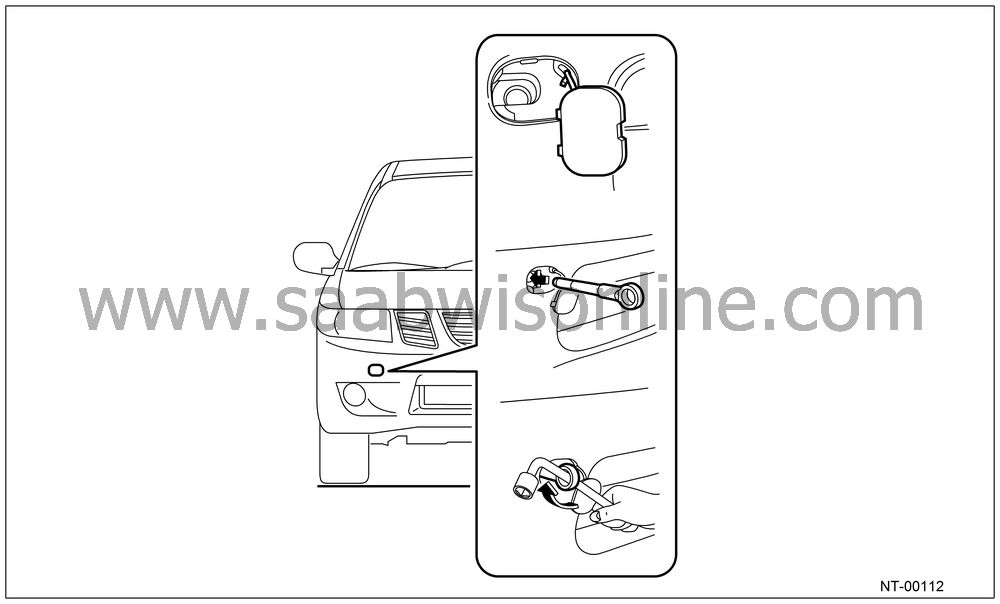
Rear
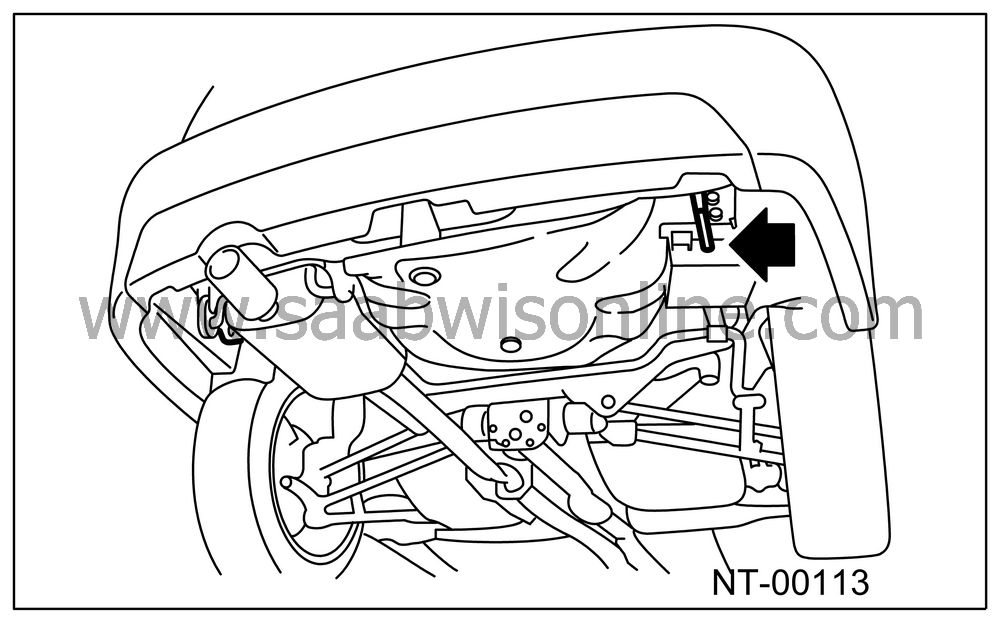
| FRONT HOOD STAY INSTALLATION |
At the check and general maintenance
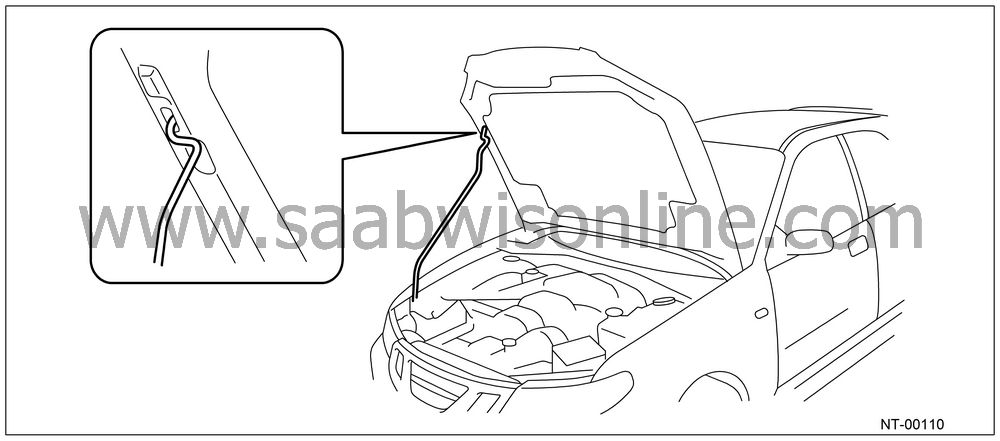
When wider hood opening is necessary
Remove the hood stay.Set the upper end of stay into the hole of hood inner.
Remove the grommet in the wheel apron, and set the lower end of stay into hole.
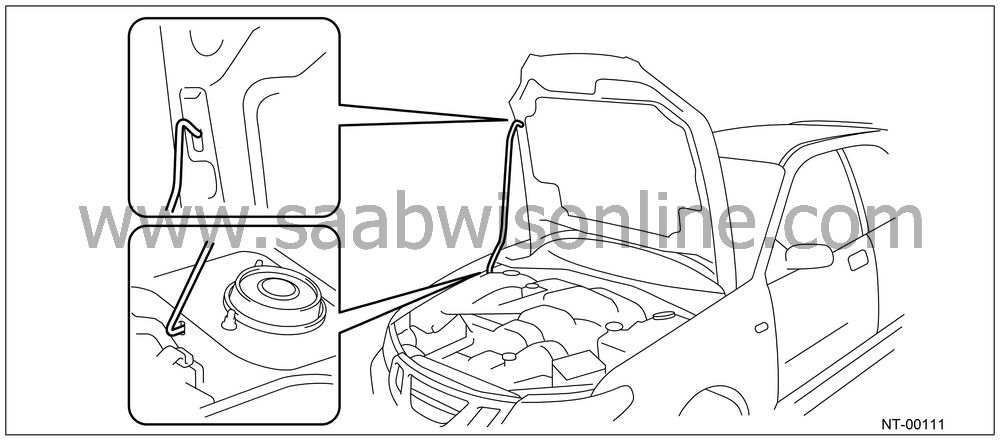
| TRAINING |
For information about training, contact a dealer or agent.
| GENERAL SCAN TOOL |
Using general scan tools will greatly improve efficiency of repairing engine electronic controls. The Vehicle Diagnostic Interface can be used to diagnose the engine and also the ABS, the AT, and other parts.


